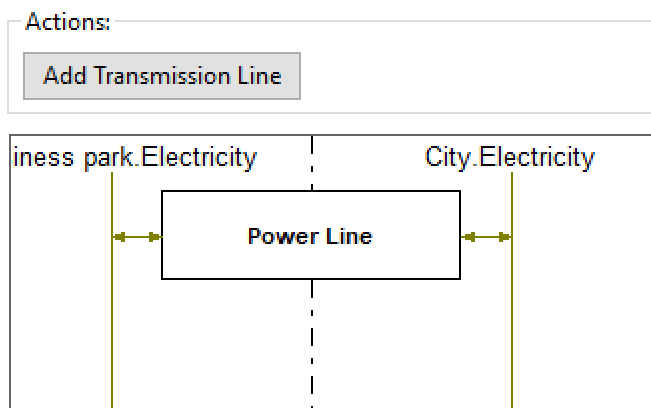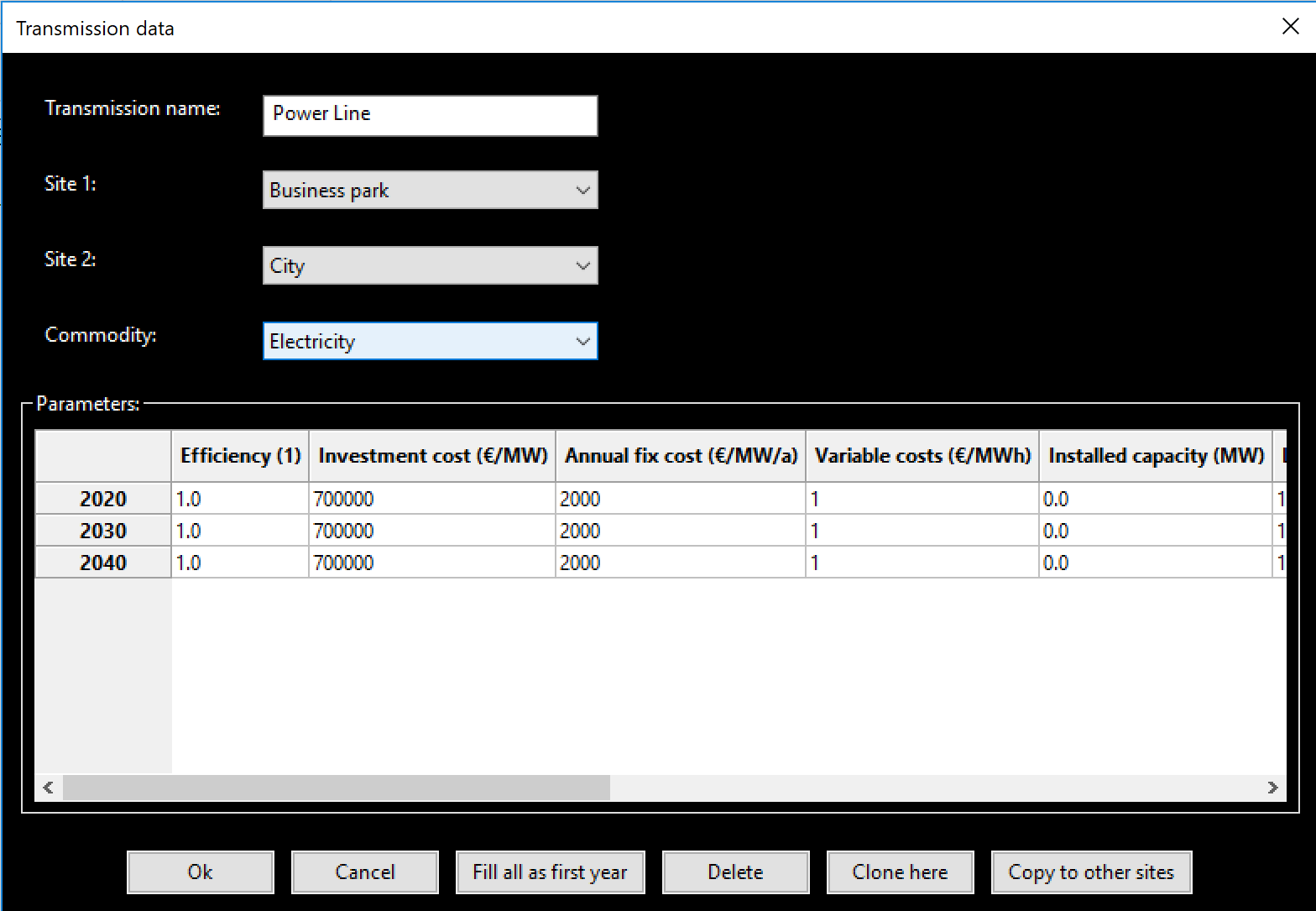Tab Transmission¶
For the description of the transmission tab first the standard example of a business park and neighbouring ciy will be used. In the end of this page a small guide for filling out this tab from scratch will be given.
In the transmission window transportable commodities linked to any transmission line are depicted in the typical fashion for commodities. They ae named according to the convention ‘Site.Commodity’. They only appear when an according transmission line is added. Commodities belonging to different sites are separated by vertical dashed lines. For the standard example ‘Business_park_City’ the tab looks like this:

The parameter input window that opens when double clicking on the rectangle representing an existing transmission or clicking the rightmost symbol in the RES header (battery) for a new transmission looks like this:

- Efficiency (1) specifies the transport efficiency of the transmission line.
- Lifetime of installed capacity (years) (Only first file) gives the rest lifetime of the installed transmission lines in years. A transmission line can be used in a modeled year y still if the lifetime plus the first modeled year exceeds the next year y+1.
- Investment cost (€/MW) denotes the capacity specific investment costs for the transmission line. You should give the book value here. The program will then translate this into the correct total, discounted cost within the model horizon.
- Annual fix costs (€/MW) represent the amount of money that has to be spent annually for the operation of a transmission capacity. They can represent, e.g., labour costs or calendaric ageing costs.
- Variable costs (€/MWh) are linked to the operation of a given transmission line.
- Installed capacity (MW) (Only first file) gives the transmission capacity of transmission lines already installed at the start of the modeling horizon.
- Minimum capacity (MW) denotes a transmission capacity target that has to be met by the transmission lines in a given modeled year. This means that the system will build at least this transmission capacity.
- Maximum capacity (MW) restricts the transmission capacity that can be built to the specified value.
- Weighted average cost of capital denotes the interest rate or expected return on investment with which the investor responsible for the energy system calculates.
- Depreciation period denotes both the economical and technical lifetime of all units in the system. It thus determines two things: the total costs of a given investment and the end of operational time for all units in the energy system modeled.